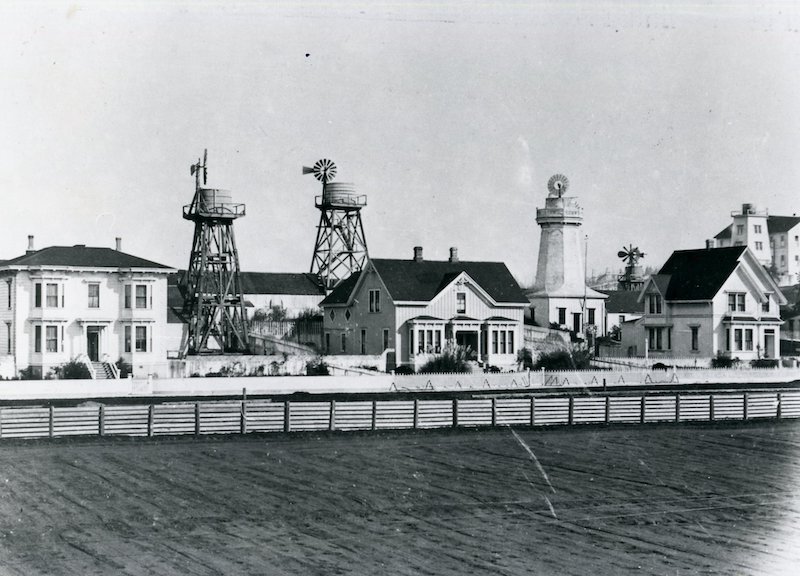August 20th-24th marks this year’s World Water Week, a non-profit conference held annually by the Stockholm International Water Institute (SIWI). Since its inception in 1991, World Water Week has become the leading conference devoted to global water issues, featuring a variety of participating organizations, including the United Nations. Each year, the conference seeks to bring together a diverse array of people and professions to develop solutions for the growing number of water challenges the world faces.

Little Lake Street in Mendocino was known as “Bankers Row.” From left to right: the Henry Jarvis House, the Albert Brown House, and the Elisha Blair House, each with a water tower and windmill, some of the most elegant in Mendocino. From the Emery Escola Collection.
This year’s theme is Seeds of Change: Innovative Solutions for a Water-Wise World. According to the SIWI, the world has entered a time of unprecedented water-related crises due to climate change and loss of biodiversity, both exacerbated by human activity. The goal of this year’s gathering is to share innovative ideas and develop solutions for how the world can manage, and counteract, increasing water scarcity and inequality.
On the topic of water crises, there is perhaps no state in America as well-versed as California. The years 2020-2022 were the three driest in the state’s recorded history. Though the drought was eased by the deluge of this winter’s repeated atmospheric rivers, access to water remains an ongoing concern in the drought-prone state. While many reservoirs have recently recovered, precipitation-dependent groundwater aquifers remain depleted throughout California due to years of overconsumption without sufficient replenishment.
During the last drought Mendocino itself made international news with its water shortages. Headlines in newspapers and websites wrote of the picturesque small town on the northern California coast where the wells were running dry. Mendocino became a prime example of the perils of climate change and the consequences of the weather extremes. Few local residents or business owners are likely to forget anytime soon the water conservation measures adopted during the emergency or the scramble for alternative sources of water to keep the town functioning.
Perhaps it is not surprising that Mendocino’s fate has often been linked to water. The first settlers arrived by ship to build the sawmill that would soon provide prosperity and prominence to Mendocino. This mill relied on water for its lucrative operations. Logs were transported for processing along Big River and its tributaries, and lumber was shipped to San Francisco along the Pacific Ocean coastline.
As the town expanded and more homes and businesses were built, Mendocino’s iconic water towers began to appear. Martha Ford, wife of town founder Jerome B. Ford, recorded in her diary, “One thing early Mendocino enjoyed was water piped into the houses. Water was fairly near the surface due to the copious rain in the winter. The practice of digging wells was common here – a 3-foot diameter well, 15 to 30 feet deep could provide all the water needed to support a family.” Because of the town’s shallow water table, water towers were necessary to store the water pumped up from these wells via windmills. Eventually, over 100 water towers dotted the village’s skyline.
Currently, only a couple of dozen water towers remain in Mendocino. Though they may no longer serve their original purpose, these towers persevere as intriguing landmarks, and perhaps they can serve as a reminder of the critical role of water in both our past and our future.
The Kelley House Museum is open from 11AM to 3PM Thursday through Monday. If you have a question for the curator, reach out to curator@kelleyhousemuseum.org to make an appointment. Walking tours of the historic district depart from the Kelley House regularly.